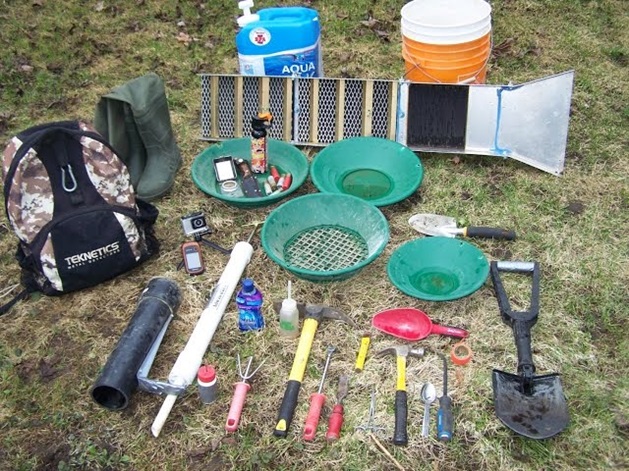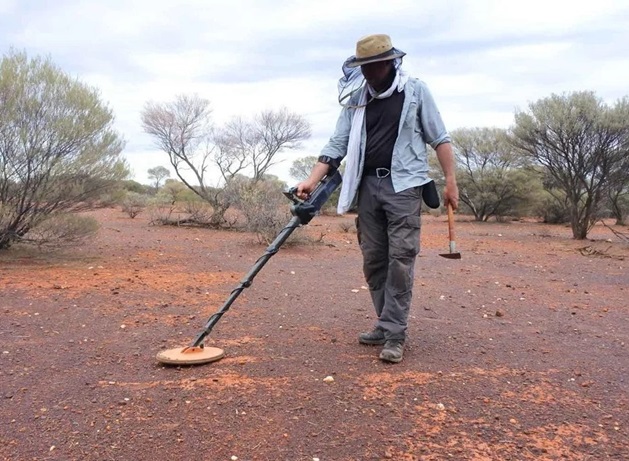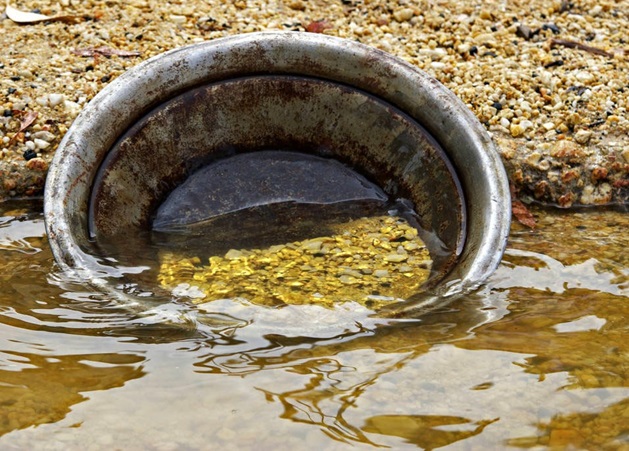The allure of prospecting lies in its irresistible blend of adventure, history, and the tempting possibility of discovering valuable treasures. Whether you dream of unearthing gleaming gold nuggets or rare gemstones, prospecting offers a thrilling escape into nature, coupled with the satisfaction of a rewarding hunt. However, successful prospecting is no mere stroke of luck. It requires the right prospector tools, knowledge, and techniques. Equipping yourself with the appropriate prospecting gear and insights ensures that your expeditions are fruitful and enjoyable and safe.
Essential Prospecting Tools

To embark on a successful prospecting journey, it’s essential to carry a variety of reliable prospector tool selection and equipment. Here’s a breakdown of must-have items:
Gold Pan
The gold pan remains a classic tool for prospecting. Lightweight and easy to use, it’s perfect for separating gold flakes and nuggets from sediment in rivers and streams. Look for pans with riffles and raised edges that help trap gold particles.
Shovel and Pickaxe
These versatile tools are essential for digging through soil and breaking apart rocks. A sturdy shovel allows you to scoop material efficiently, while a pickaxe is ideal for prying out mineral samples from hard terrain.
GPS and Maps
Navigating remote locations requires accurate guidance. A GPS device ensures you can find promising sites and return safely. Supplement it with detailed topographical maps to identify geological features associated with valuable deposits.
Metal Detectors
A reliable metal detector is a cornerstone of modern prospecting. These devices help you locate metal-rich deposits, including gold and other valuable minerals. Advanced models can differentiate between types of metals and offer ground-balancing features, making them indispensable for serious prospectors.
Specialised Equipment
Advanced gold prospecting equipment includes sieves, classifiers, sluice boxes, and water pumps. Sieves and classifiers help sort sediment by size, improving your chances of isolating precious materials. Sluice boxes use water flow to trap heavier particles like gold, while water pumps provide the necessary power for sluicing in low-flow areas.
Prospecting Techniques

Mastering the art of prospecting involves understanding and practising specific techniques tailored to different types of treasure hunting. Identifying gold-bearing areas is crucial. Rivers, streams, and placer deposits are prime locations. Researching local geology and historical mining activity can point you to promising sites.
Gold Prospecting
- Gold prospecting remains one of the most popular pursuits. Techniques include:
- Panning: Swirling sediment in a pan to separate gold from lighter materials.
- Sluicing: Using a sluice box to capture gold from flowing water.
- Dredging: Extracting sediment from riverbeds with suction equipment.
Metal Detecting
Metal detecting is a versatile technique that extends beyond gold hunting. Parks, beaches, and historical sites are popular spots for finding coins, relics, and jewellery. To maximise success it’s important to understand your metal detector’s target identification settings to distinguish between valuable items and junk. Familiarise yourself with ground mineralisation, which can affect signal accuracy.
Rockhounding
For those captivated by the beauty of minerals and gemstones, rockhounding is a rewarding activity. Learning to identify valuable specimens and understanding their geological context will enhance your collection. Tools like hammers, chisels, and UV lights can aid in extracting and examining your finds.
Safety & Ethical Considerations
Prospecting is an exciting adventure, but it’s essential to prioritise safety and ethics
Safety First
Always pack a first-aid kit and ensure proper hydration. Protect yourself from the sun with hats, sunscreen, and lightweight clothing. Be aware of potential hazards like wildlife, unstable cliffs, and fast-moving water. A well-prepared prospector is a safe prospector.
Environmental Responsibility
Respecting nature is a fundamental part of prospecting. Minimise your impact by avoiding unnecessary disturbances to the environment. Always obtain necessary permits and adhere to local regulations. Additionally, never prospect on private property without explicit permission.
Tips for Success

A successful prospecting expedition relies not just on tools but also on preparation, learning, and persistence. Here are some practical tips:
Research and Planning
Before heading out, study the geology of your target area. Local libraries, online databases, and geological surveys can provide valuable insights. Identify locations with a history of mineral deposits and obtain any required permits or licenses to prospect legally.
Learn from Experienced Prospectors
Joining a local prospecting club or attending workshops can connect you with seasoned prospectors. Their firsthand knowledge, tips, and stories can shorten your learning curve. Additionally, explore books, articles, and online forums dedicated to prospecting supplies to broaden your understanding.
Patience and Perseverance
Prospecting is a journey that demands patience and persistence. Success often comes after repeated efforts and learning from past experiences. Embrace the process, enjoy the natural surroundings, and celebrate every small discovery.
The Bottom Line
Prospecting is a captivating pursuit that combines the excitement of exploration with the reward of uncovering hidden treasures. Equipped with the right prospector tool and a solid understanding of techniques, you can enhance your chances of success while making the experience enjoyable and safe. Remember to respect the environment, follow ethical practices, and prioritise safety during your expeditions. As you venture into the world of prospecting, let the thrill of the hunt inspire you to discover the riches that lie just beneath the surface.


